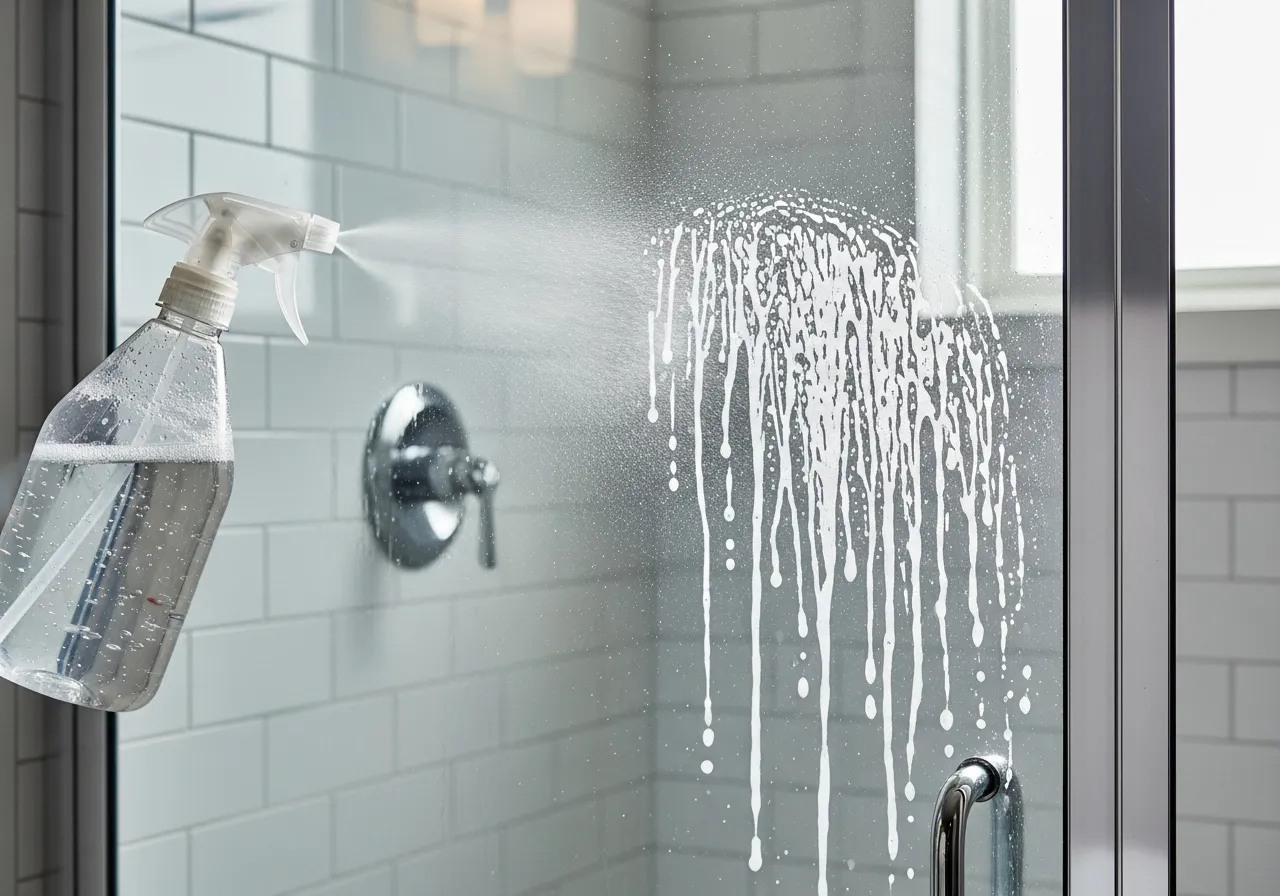
5. Cut Through Bathroom Soap Scum and Hard Water Stains
The bathroom is where vinegar’s cleaning power truly shines. Soap scum—that chalky, white film that builds up on shower doors, tile, and tubs—is alkaline. Vinegar, being an acid, is chemically perfect for dissolving it. It’s also highly effective against the hard water spots that cloud up your chrome faucets and showerheads. This makes what can you clean with white vinegar an easy question to answer in the bathroom.
For Shower Doors and Tile:
Step 1: Create a Stronger Solution. For tough bathroom grime, you may want a slightly more potent mix. Start with your 1:1 vinegar and water solution in a spray bottle. For extra tough soap scum, you can warm the vinegar gently in the microwave (do not boil it) before mixing it with water; warm acid often works faster. You can also add a teaspoon of mild dish soap to the mix. The soap acts as a surfactant, helping the vinegar cling to vertical surfaces like shower walls instead of just running off.
Step 2: Spray and Wait. Spray the solution generously over your glass shower door, tile walls, and tub surfaces. Now, let it dwell. For moderate buildup, 5-10 minutes is sufficient. For heavy, caked-on soap scum, you might need to let it sit for up to 30 minutes. You may need to re-mist the area to keep it damp.
Step 3: Agitate and Scrub. After the dwell time, use a non-scratch sponge or a soft-bristled brush to gently scrub the surfaces in a circular motion. You should feel the soap scum breaking down and coming loose. Pay extra attention to corners and grout lines.
Step 4: Rinse and Dry. Rinse the surfaces thoroughly with warm water. You can use your showerhead for this. After rinsing, use a squeegee on the glass and a dry microfiber towel on the fixtures and tile to prevent new water spots from forming. A daily squeegee of your shower glass after use can dramatically reduce future buildup.
Important Grout and Tile Warning: As mentioned before, do not use this acidic cleaner on natural stone tiles like marble or travertine. For ceramic and porcelain tile, it is generally safe. If you have colored or unsealed grout, always test in a hidden spot first to ensure the vinegar does not cause discoloration.
For Clogged Showerheads and Faucets:
If your showerhead has a weak or uneven spray, mineral deposits are likely blocking the nozzles.
Step 1: Submerge the Fixture. For a showerhead, fill a sturdy plastic bag with undiluted white vinegar. Carefully place the bag over the showerhead so the head is fully submerged in the vinegar. Secure the bag in place with a rubber band or a zip tie.
Step 2: Let it Soak. Let the showerhead soak for at least an hour. For very heavy buildup, you can leave it overnight.
Step 3: Scrub and Flush. Remove the bag and use an old toothbrush to gently scrub the nozzles to dislodge any remaining mineral deposits. Then, turn the shower on hot for a minute to flush everything out. Your spray should be strong and even once again!

















